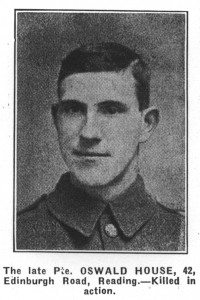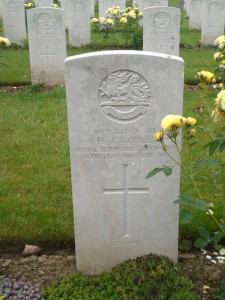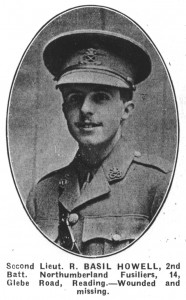Lionel Flaxman Hotson
Private 307710
1st/8th Batt. Royal Warwickshire Regt.
Division 2
Lionel Flaxman Hotson was the son of William and Caroline Flaxman Hotson, of 30 Highgrove Street, Reading. He died on the 27th August 1916 and is commemorated on the Thiepval Memorial to the Missing. Pier and Face 9A, 9B and 10B.
Lionel Flaxman Hotson is remembered on the headstone of his parents grave. The grave location, using the notation of the Berkshire Family History Society, is 2E9. It is believed that Lionel was the eldest of four children, he had a younger brother and two younger sisters. His father had owned his own grocery and provisions business. The family moved to Reading from Essex where Lionel had been born.
The details pertaining to the death of Lionel Flaxman Hotson are not known. His battalion was one which suffered very high casualties on the first day of the Somme as they fought along the line of the Serre road, just north of Hawthorn Ridge. The battalion casualties numbered 588 names. The 1st/8th had been attached to the 4th Division on the 1st July, their own Division the 46th fared little better being used in the diversionary attack at Gommecourt.
On the 2nd July the 46th Division returned to normal trench warfare. The war of attrition of the Somme battles with attack and counterattack, continued throughout the summer until mid November. Whatever the action that Lionel Flaxman Hotson found himself in when he was killed at the age of 18, he became one of the 73,367 men with no known grave as a result of these battles.



